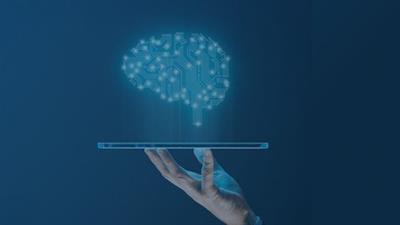
Data Science in Python: Unsupervised Learning
Posted on 28 Apr 06:13 | by BaDshaH | 0 views

Published 4/2024
Created by Maven Analytics,Alice Zhao
MP4 | Video: h264, 1280x720 | Audio: AAC, 44.1 KHz, 2 Ch
Genre: eLearning | Language: English | Duration: 202 Lectures ( 16h 46m ) | Size: 5.9 GB
Learn Python for Data Science & Machine Learning, and build unsupervised learning models with fun, hands-on projects
What you'll learn:
Master the foundations of unsupervised Machine Learning in Python, including clustering, anomaly detection, dimensionality reduction, and recommenders
Prepare data for modeling by applying feature engineering, selection, and scaling
Fit, tune, and interpret three types of clustering algorithms: K-Means Clustering, Hierarchical Clustering, and DBSCAN
Use unsupervised learning techniques like Isolation Forests and DBSCAN for anomaly detection
Apply and interpret two types of dimensionality reduction models: Principal Component Analysis (PCA) and t-SNE
Build recommendation engines using content-based and collaborative filtering techniques, including Cosine Similarity and Singular Value Decomposition (SVD)
Requirements:
We strongly recommend taking our Data Prep & EDA course before this one
Jupyter Notebooks (free download, we'll walk through the install)
Familiarity with base Python and Pandas is recommended, but not required
Description:
This is a hands-on, project-based course designed to help you master the foundations for unsupervised learning in Python.We'll start by reviewing the data science workflow, discussing the techniques & applications of unsupervised learning, and walking through the data prep steps required for modeling. You'll learn how to set the correct row granularity for modeling, apply feature engineering techniques, select relevant features, and scale your data using normalization and standardization.From there we'll fit, tune, and interpret 3 popular clustering models using scikit-learn. We'll start with K-Means Clustering, learn to interpret the output's cluster centers, and use inertia plots to select the right number of clusters. Next, we'll cover Hierarchical Clustering, where we'll use dendrograms to identify clusters and cluster maps to interpret them. Finally, we'll use DBSCAN to detect clusters and noise points and evaluate the models using their silhouette score.We'll also use DBSCAN and Isolation Forests for anomaly detection, a common application of unsupervised learning models for identifying outliers and anomalous patterns. You'll learn to tune and interpret the results of each model and visualize the anomalies using pair plots.Next, we'll introduce the concept of dimensionality reduction, discuss its benefits for data science, and explore the stages in the data science workflow in which it can be applied. We'll then cover two popular techniques: Principal Component Analysis, which is great for both feature extraction and data visualization, and t-SNE, which is ideal for data visualization.Last but not least, we'll introduce recommendation engines, and you'll practice creating both content-based and collaborative filtering recommenders using techniques such as Cosine Similarity and Singular Value Decomposition.Throughout the course you'll play the role of an Associate Data Scientist for the HR Analytics team at a software company trying to increase employee retention. Using the skills you learn throughout the course, you'll use Python to segment the employees, visualize the clusters, and recommend next steps to increase retention.COURSE OUTLINE:Intro to Data ScienceIntroduce the fields of data science and machine learning, review essential skills, and introduce each phase of the data science workflowUnsupervised Learning 101Review the basics of unsupervised learning, including key concepts, types of techniques and applications, and its place in the data science workflowPre-Modeling Data PrepRecap the data prep steps required to apply unsupervised learning models, including restructuring data, engineering & scaling features, and moreClusteringApply three different clustering techniques in Python and learn to interpret their results using metrics, visualizations, and domain expertiseAnomaly DetectionUnderstand where anomaly detection fits in the data science workflow, and apply techniques like Isolation Forests and DBSCAN in PythonDimensionality ReductionUse techniques like Principal Component Analysis (PCA) and t-SNE in Python to reduce the number of features in a data set without losing informationRecommendersRecognize the variety of approaches for creating recommenders, then apply unsupervised learning techniques in Python, including Cosine Similarity and Singular Vector Decomposition (SVD)__________Ready to dive in? Join today and get immediate, LIFETIME access to the following:16.5 hours of high-quality video22 homework assignments7 quizzes3 projectsData Science in Python: Unsupervised Learning ebook (350+ pages)Downloadable project files & solutionsExpert support and Q&A forum30-day Udemy satisfaction guaranteeIf you're an aspiring or seasoned data scientist looking for a practical overview of unsupervised learning techniques in Python with a focus on interpretation, this is the course for you.Happy learning!-Alice Zhao (Python Expert & Data Science Instructor, Maven Analytics)
Who this course is for:
Data scientists who want to learn how to build and interpret unsupervised learning models in Python
Analysts or BI experts looking to learn about unsupervised learning or transition into a data science role
Anyone interested in learning one of the most popular open source programming languages in the world
Homepage
https://www.udemy.com/course/data-science-in-python-unsupervised-learning/
https://rapidgator.net/file/a54fa8047aeee3b20d7bc417adea9953
https://rapidgator.net/file/1b80a76273d884a341965eecfe76bc02
https://rapidgator.net/file/746fcefad0e47f40bbb53b2ca3ca4728
https://rapidgator.net/file/e3762c8158ac8453a8037c818e8554bd
https://rapidgator.net/file/0a277341c66e23cb53ac74c7f2e66cf1
https://rapidgator.net/file/5f9a81008b6558c02e7f40be5d977736
https://rapidgator.net/file/36afce7d86273f4517b6082257e4e844
https://ddownload.com/48wihagc47o5
https://ddownload.com/yv1sd4ngb9x8
https://ddownload.com/cncfkyzgpxly
https://ddownload.com/0pqgqt25woxg
https://ddownload.com/ccr43hgrrtb6
https://ddownload.com/s7a8zpwv08im
https://ddownload.com/3mefmren0op8
Related News
System Comment
Information
 Users of Visitor are not allowed to comment this publication.
Users of Visitor are not allowed to comment this publication.
Facebook Comment
Member Area
Top News



